Dear Artist,
Yesterday, Stephanie Quinn of Dallas, Texas wrote, “Athletes are taught to visualize winning and to set goals. Often, when I visualize my finished product and set out to work on a piece, it doesn’t turn out as well as I’d hoped. Is there a way to bring these two points — the process and the visualized expectations — together so that there is less disappointment?”
Thanks, Stephanie. This is a terrific question. Fact is, in our game, a lot of prior visualization and painterly goal-setting are not always good for our art. Sure, you can visualize painting a show, or the exploration of a subject, or even the Lamborghini you’re going to buy with the proceeds, but you don’t want to be too accurate in your preconception of your art. Here’s why:
From the evolved Impressionists to the greats of today, the most effective art-making processes follow the evolution of the works themselves. Process trumps plans. That’s why our job is called “creative.” One needs to beware of too much prior visualization. It is the inflicting of mind on an act that is ideally the progressive work of eyes and hands. It’s been my experience when artists switch from carrying out prior visualizations to a more open-minded experience of exploration and minute-by-minute adjustment, quality goes up. Rather than proscribing a recipe, think of your art as a dynamic event. Know that the safe guide of visualization can also be a choking straightjacket. Planning is great, but you need to get into improvisation mode. Your mind is a tyrant. It can only be subverted by the persistence of your eyes, your intuition and your heart. An exciting trip of discovery is one that keeps you coming back for more.
Further, the problem with comparing art to sport is that the latter lives within an interminable romance with numbers. Distances, times, goals and even errors are measured and traced with alarming accuracy. Numbers define athletic success. Art, on the other hand, is more arbitrary. Prowess is often a matter of opinion. As the goals and values of art are difficult to quantify, art needs to be seen as a personal, private activity where the joy is in the doing.
Best regards,
Robert
PS: “The mind stands in the way of the eye.” (Arthur Stern)
Esoterica: This is just one more reason why preparatory roughs can be dangerous. If you expend too much energy on comps, particularly if somebody like you approves them, they can lock you in. Further, you may leave out the very flourishes that your final may need. I believe in “rough, rough, roughs.” That way you’re not too committed and you can jump into your venture with gusto, having not yet solved all of its problems. “Vision is not enough,” said the great playwright Vaclav Havel. “It must be combined with venture. It is not enough to stare up the steps, we must step up the stairs.”
This letter was originally published as “The case for visualization” on May 21, 2010.
Have you considered a Premium Artist Listing? With each letter, an artist is featured at the bottom of this page. The Premium Artist Listings are a means of connecting artist subscribers through their work. Proceeds from each listing contribute to the production of The Painter’s Keys.
“I found that if I planned a picture beforehand, it never surprised me, and surprises are my pleasure in painting.” (Yves Tanguy)
Featured Workshop
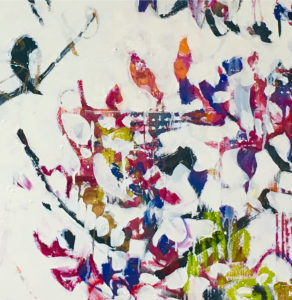 Join Ellie Harold for “Intuitive Painting: Permission to Paint Expressively,” designed especially for mature women artists of all skill levels who wish to explore this medium for soulful exploration. The retreat provides attractive accommodations (your own room!) along with lightly structured activities for centering, relaxation and low stress art-making. You’ll have plenty of free time to muse, paint, write and reflect while enjoying the colors, textures and flavors of San Miguel. This Retreat has the potential to transform not only your art but your life! You’ll return home with a specific art “care plan” to assure support for further creating. Details at www.EllieHarold.com.
Join Ellie Harold for “Intuitive Painting: Permission to Paint Expressively,” designed especially for mature women artists of all skill levels who wish to explore this medium for soulful exploration. The retreat provides attractive accommodations (your own room!) along with lightly structured activities for centering, relaxation and low stress art-making. You’ll have plenty of free time to muse, paint, write and reflect while enjoying the colors, textures and flavors of San Miguel. This Retreat has the potential to transform not only your art but your life! You’ll return home with a specific art “care plan” to assure support for further creating. Details at www.EllieHarold.com.
Featured Artist
Christine Hanlon, whose work has been compared to that of Edward Hopper, creates ‘urban landscapes which quietly exude atmosphere.’

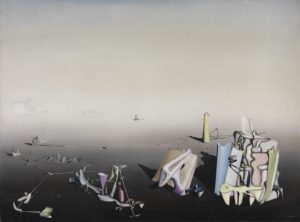
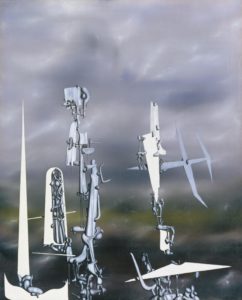
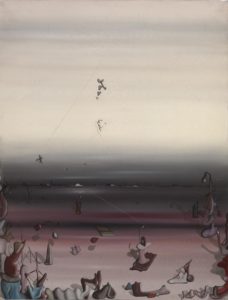
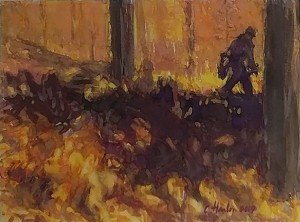



11 Comments
This is so true. I let the painting tell me where to go next. So much more fun that way!
Such a great read.
I didn’t start painting until my eldest was ten. I’d never taken painting. When I began, I had no idea where to start but found that ideas for paintings came when I paused at the end of the wharf and looked out over Burrard Inlet. I bought a tiny flip notebook 2 1/2″ X 3 1/2″ and started sketching simple lines to remind me of the idea. Keeping the clear image in my head, I’d put a few guiding lines on the big canvas staple-gunned to the wall, and get ready for the next step.
However, the moment I put paint to canvas, I “knew” it was not going to be the image I had set out to do. It happened every time. So, I gave in , gave myself permission to let the process be the guide. I “knew” the right colour from the shockingly wrong colour by holding up the tubes of paint.
Very few, if any of those tiny sketches ended up as paintings, but they turned out to be great kickstarters and taught me my first lessons of art making. Keep a fluid, open mind; trust your gut instincts; give yourself permission. Of course, the painting’s n e v e r finished, but you have to call it quits at some point..
You can plan yourself into a box. Or plan so much there’s no incentive to finish the art. I’ve done both and try to keep an own mind and trust in all my previous study that the art will find it’s way out.
This made me think about how being creative is like traveling somewhere but without much planning and just going along with whatever happens. With the internet we have become a bit obsessed with planning and having to many expectations. Think about all your travel adventures when the internet didn’t exist. That’s how I’d like to feel when I’m creating or doing art. Having something new and exciting happen along the way and being open to experiencing it.
I love this letter. Maturity in making art comes with the learning how to break from the goal thing, and follow the brush. It’s only natural and built into our human make up to have visualization of what “might be”, that vision that pushes us to paint at all. What will I paint? Oh, I can paint that, I can see it now… that will be GREAT!… only to find out along the way lots of stumbling blocks and disappointment over things not turning out the same way as my end product mental visual. Every painting I do has stages of intense frustration and disappointment. They never look the same as my pre-paint mental visual in the end. I let go of thinking I had to stay within the grid, no grids for me, just paint and play the music loud enough to drown out my own critical voice. Most of the time they surprise me and outdo the pre-paint mental visual. Or, I’ve forgotten what that pre-paint mental visual looked like, both concepts work.
These are great reminders. When I’m feeling ‘locked in’ with too much planning and anticipation, sometimes I put on jazz to inspire the intuitive and improvisation nature of art-making.
Please unsubscribe me from this mail address
I have had a big career in book publishing. Advice for writing has shifted from the days of yore “write what you know” to “write what you want to know.” Writing while exploring can lead to exquisite results. Commercial bestsellers are planned, of course, and for many are a good way to learn–and the most reliable way to make money. But I wouldn’t want to be stuck like that. Writers fit into two camps–the planners and the pantsers, who write by the seat of their pants. I read here many parallels between advice for artists and best practices for writers. I just bought my first sketchbook.
Is that you, Vicky? It’s Rick, your old writing buddy.
With changing light, changing weather and bugs, plein air painting lets an artist know their own relative importance of planning. Ideally, general composition, value and color parameters are second nature before beginning on site painting. If there’s to be a lot of pre-planning and sketching, the subject may need revisiting at the same time over several days. If an artist is more geared toward immediacy, the challenge of direct painting for spontaneity can’t be any more stimulating. Yes, basic “rules” and palette preferences are gained through experience, and without which a result may be doomed. But there’s an exhilaration that comes from immediately recording inspiration and communicating that to viewers. This individual decision has no one-size-fits-all answer.
This strikes a chord. I work mostly with colored pencil and have been taught how to create excellent copies of subject, usually captured in a photography. For the past few years I have been stretching to reach beyond that, to find the essence of the subject, what about it interests me, and allow the painting to emerge. I do plan, and am finding that along the way there is a freedom and joy in releasing the plan and following the painting where it leads me. Much like writing fiction, when characters start doing things I have not planned and I have to follow them to where they are going, what they are up to. Not easy, and yet is very rewarding, in all creative media.